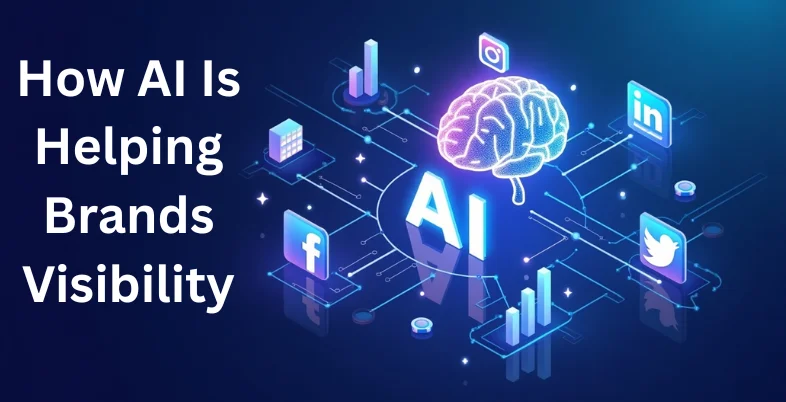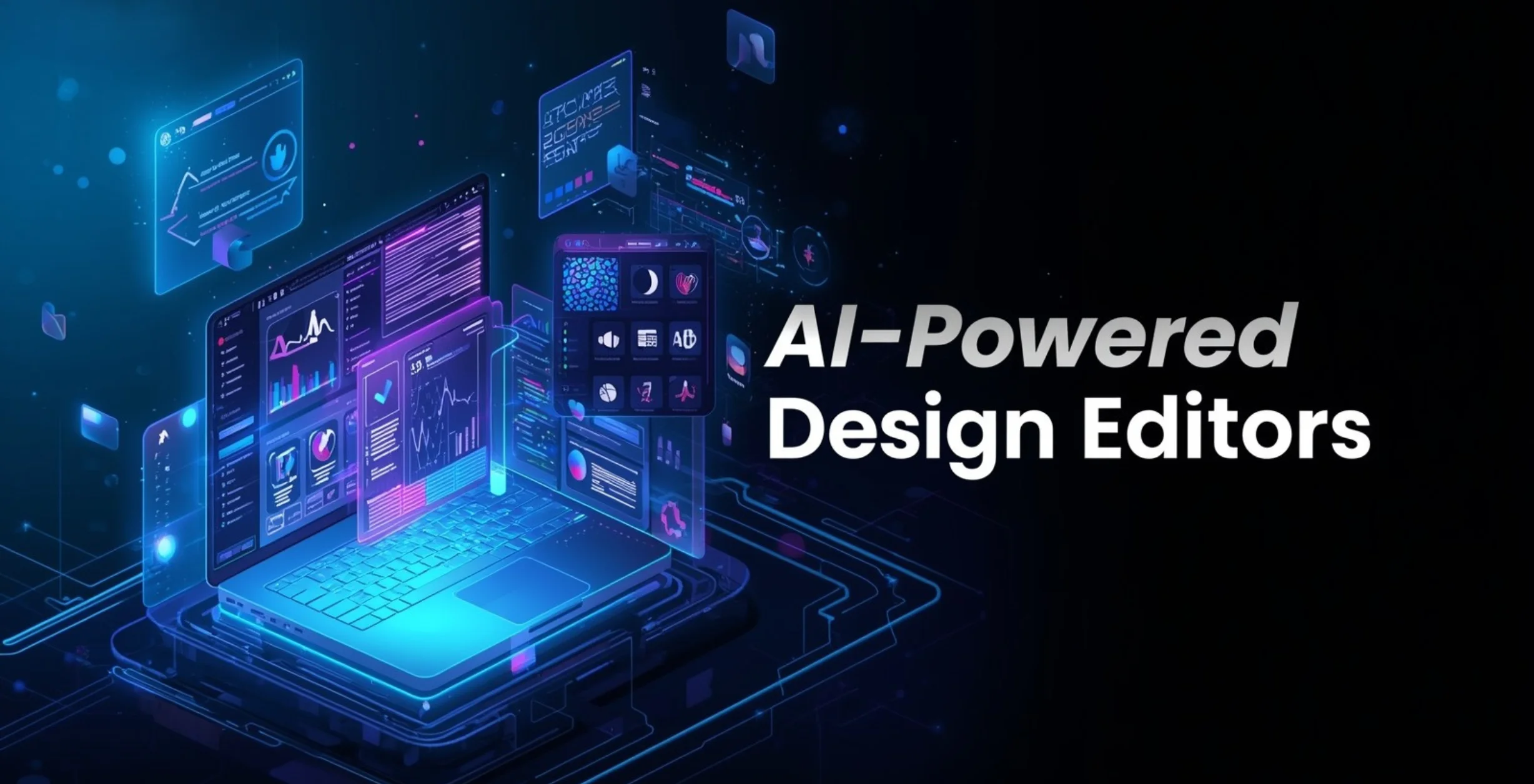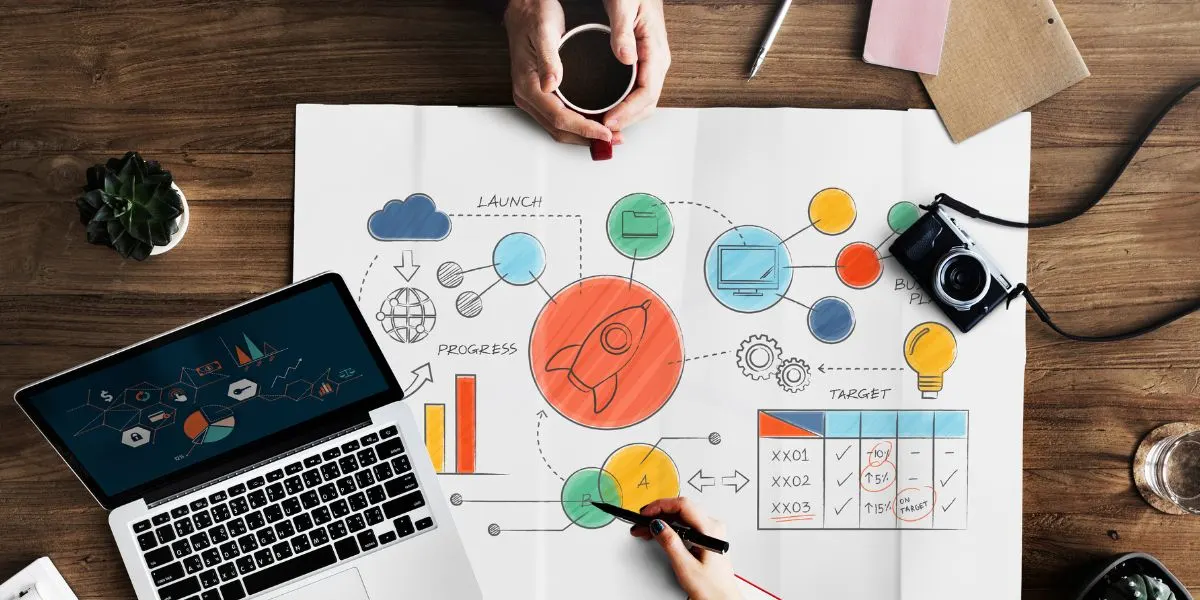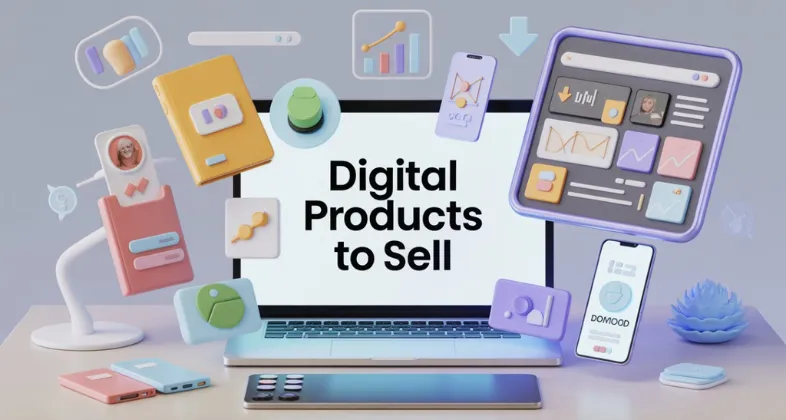What’s the point of having a great product if nobody knows you exist?
In today’s hyper-competitive, algorithm-driven world, just showing up is no longer enough. Brand visibility — the degree to which your audience sees, recognizes, and recalls your brand — has become both an art and a science. And in 2025, artificial intelligence is taking the lead in shaping how brands are discovered and remembered.
This guide explores how AI is reshaping brand visibility and what today’s most forward-thinking brands are doing to stay ahead of the noise.
Why Visibility Is Evolving, And Fast

Gone are the days when visibility simply meant buying ad space or posting once a week on Instagram. Today, it’s about creating smart, adaptive brand ecosystems that show up in the right place, at the right time, with the right message.
Consistency across your channels, from your website and email to your social media presence, builds recognition and trust. But in 2025, consistency isn’t enough. Visibility also demands speed, precision, and personalization, and that’s where AI comes in.
Tailored Strategies Across Industries

One size never fits all, especially when it comes to brand visibility. AI allows brands in different sectors to fine-tune how and where they appear.
- Retail & eCommerce: Dynamic pricing and product recommendations powered by AI keep brands top-of-mind.
- Healthcare: Chatbots and AI-curated content educate and build trust in highly regulated spaces.
- B2B SaaS: Predictive content suggestions and lead scoring drive visibility with the right buyers.
- Hospitality: AI-driven personalization in ads and booking experiences enhances customer recall.
- Education & Nonprofits: AI tools help craft compelling narratives and expand reach cost-effectively.
Whatever the industry, the focus is shifting from broad exposure to meaningful micro-targeting.
Repurposing Smarter with AI Assistance
Content repurposing has always been a smart visibility tactic, but AI tools now supercharge it. With platforms like Jasper, Copy.ai, and Canva’s Magic Studio, marketers can instantly transform blog posts into videos, emails, or social captions.
You don’t need a large team to be everywhere. You just need smart workflows that turn one piece of content into ten, optimized for different channels and audiences.
Repurposing in this AI-powered age isn’t just about saving time. It’s about extending the life and reach of your ideas, multiplying visibility across formats without diluting quality.
“The key to artificial intelligence has always been the representation.” —Jeff Hawkins
Email That Isn’t Boring (or Forgotten)
AI is revitalizing email marketing. From subject line testing to personalized send times, AI ensures your email actually gets seen — and clicked.
You can now segment audiences automatically based on behavior and write tailored messages in seconds. Even better, with a reliable data archiving solution, your email strategy stays compliant, secure, and organized — even as it scales.
In 2025, a good email is smart, not spammy. It earns visibility and loyalty.
Why Most Brands Still Miss the Mark on Data
Despite all the tech available, data paralysis is real. Many brands collect analytics but don’t have the time or know-how to interpret it.
In fact, new study shows that only 7% of marketers feel they have enough time to analyze their data the right way.
This bottleneck prevents visibility strategies from evolving. Brands that dedicate time, use AI data analytics tools or AI-powered dashboards that highlight what matters, have a massive edge. Tools like Looker Studio, GA4 insights, and others can surface what your audience truly values — so you can double down on it.
The End of Guesswork in Messaging
Brands used to make visibility decisions based on gut feeling. Now, AI tools analyze engagement data to recommend the most effective copy, images, and tone.
No more second-guessing subject lines or landing page headers, machine learning can test thousands of variations to find what clicks with your audience.
AI-generated A/B testing means even smaller teams can refine their messaging in real-time, constantly optimizing brand exposure.
Collaborations That Work
Influencer fatigue is real, so brands are shifting toward micro-collaborations and co-created content with niche experts. AI helps identify voices that overlap with your audience and values.
Instead of focusing on reach, it’s about authentic resonance — creating content people care about and trust. Guest appearances, community AMAs, and expert features bring fresh visibility without feeling forced.
Even better? AI can help predict which collaborators will yield the highest engagement based on your followers’ behavior patterns.
Smart Placement Over Loud Presence
Many brands still think visibility is about being everywhere. But smart brands use AI to find where their audience actually spends time — and focus deeply there.
For some, that’s Reddit or industry newsletters. For others, it’s LinkedIn groups or emerging audio platforms. AI tools can analyze demographic and psychographic data to pinpoint where attention actually lives — and help you claim it before your competitors do.
Ads That Remember What People Forgot
Retargeting isn’t new — but AI has made it terrifyingly effective. By tracking user behavior across devices and platforms, brands can retarget with precision that borders on eerie (but effective).
And with platforms like Klipfolio alternatives, tools designed for visualizing marketing and performance data, brands can track visibility trends in real-time and make smarter decisions faster.
It’s not about being creepy. It’s about being relevant at the right time, with messaging the user already showed interest in. That’s the real power of visibility.
Best AI Tools to Improve Brand Visibility in 2025
Looking for the best AI tools to improve brand visibility in 2025? The right software can save hours of manual work while amplifying your reach and consistency. Whether you’re a solopreneur or leading a team, these tools help automate, analyze, and optimize your brand’s presence across multiple channels.
Here are a few worth exploring:
- Jasper AI – for AI-generated content that sounds human and converts
- Looka – for creating consistent, on-brand visuals (logos, social kits, etc.)
- Brand24 – for AI-powered brand monitoring and sentiment analysis
- SurferSEO – for optimizing content using AI keyword suggestions and SERP data
- Lately.ai – for automatically generating social posts from long-form content
Using these tools can help you boost visibility with less manual effort, all while maintaining brand consistency and quality.
How AI Enhances Visual Brand Identity for Small Businesses

Many small brands ask: how does AI help with brand visibility for startups or small businesses? The answer lies in scalability. AI enables lean teams to maintain a polished and professional visual identity, a key factor in how memorable a brand is.
Here’s how AI improves visual brand identity:
- AI-generated logos and style kits maintain a cohesive look across platforms.
- Dynamic image generation (e.g., business AI photos) personalizes brand pages even without a professional photographer.
- Predictive design tools adapt visuals to platform trends (e.g., Instagram reels, LinkedIn carousels).
- Auto-resizing and formatting saves hours when repurposing graphics across channels.
In short, AI bridges the gap between startup budgets and enterprise-grade design, making consistent brand visibility achievable at every stage of growth.
“Some people call this artificial intelligence, but the reality is this technology will enhance us. So instead of artificial intelligence, I think we’ll augment our intelligence.” —Ginni Rometty
The Rise of Business AI Photos
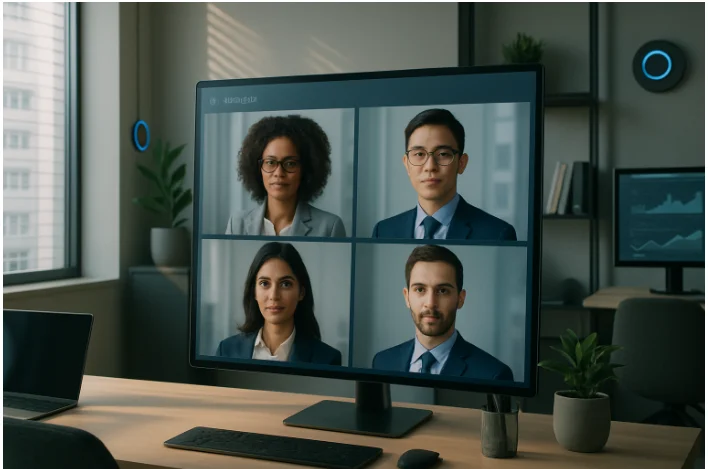
Here’s a subtle but powerful visibility trend: AI-generated team images, also known as business AI photos. These hyper-realistic, professional-looking portraits are now used by startups, remote-first companies, and solopreneurs to personalize their brand without the hassle of traditional photo shoots.
They show up on “Meet the Team” pages, pitch decks, and even LinkedIn profiles — creating a more human connection, powered by AI. Combined with AI-generated visuals and content layouts, brands can now look polished and credible from day one.
This innovation levels the playing field, making premium presentations accessible to every brand.
Brand Visibility Without a Big Budget? Still Possible
Visibility is no longer pay-to-play. Brands can still make waves by targeting long-tail keywords for brand awareness, creating content clusters, and staying consistent on social media. Even tools like Canva, Buffer, and Ubersuggest offer free or low-cost plans to help small businesses stand out.
By focusing on intent-rich queries like “how to increase brand visibility on social media” or “best brand visibility strategies for small businesses,” brands can appear where real questions are being asked — and become the answer.
Final Thoughts
In 2025, the brands that win attention aren’t always the loudest — they’re the smartest, most adaptive, and most relevant.
AI has opened the door to a new era of smarter visibility, where creativity meets automation and reach meets relevance. Whether you’re using AI to write copy, generate visuals, or fine-tune your strategy, the goal remains the same: to be seen, remembered, and trusted.
FAQs on Brand Visibility in the AI Era
What is brand visibility?
It’s the measure of how often and how clearly your target audience encounters and recognizes your brand.
How does AI help with brand visibility?
AI improves personalization, speeds up content creation, optimizes ad placement, and identifies where your audience actually engages.
What’s the difference between awareness and visibility?
Awareness is memory and recognition; visibility is presence and exposure. Visibility is the first step to building awareness.
Can small businesses compete with big brands in visibility?
Absolutely! Thanks to affordable AI tools, long-tail SEO, and creative content repurposing.
What industries benefit most from AI-powered visibility?
E-commerce, B2B, healthcare, and SaaS are seeing the fastest gains, but nearly every sector can benefit.
